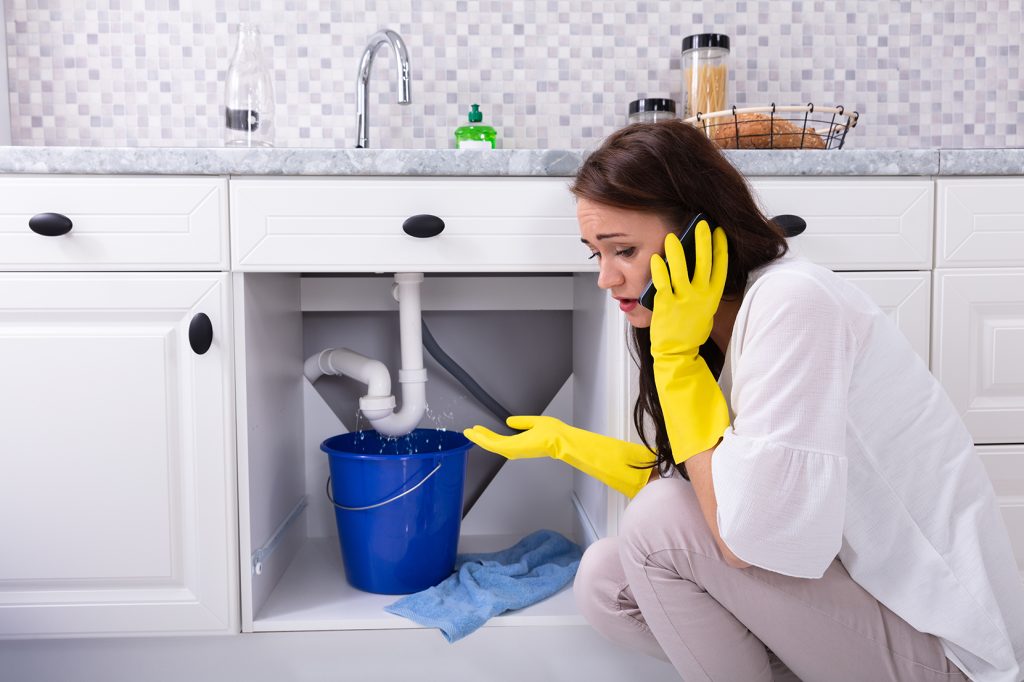
Are you dealing with a leaky pipe and wondering what to do before the plumber arrives? You have come to the right place! It’s important to understand that when it comes to plumbing emergencies, acting fast is key in order to prevent further damage. While waiting for help from a plumber, there are steps you can take on your own in order to avoid additional stress and expenses caused by water leakage. In this post we’ll talk about everything from shutting off the main water switch, collecting evidence of any possible sewage overflows or spills, and purchasing a repair kit for temporary fixes until more permanent repairs can be made, and many other useful tips.
Shut off the water to prevent further damage
Water damage can be a homeowner’s worst nightmare. Whether from a burst pipe, leaky roof, or other source, when water gets where it shouldn’t be, it can cause extensive and costly damage. That’s why shutting off the water as quickly as possible is essential to prevent further harm. By doing so, you can stop the flow of water and avoid additional destruction to your property. While it may seem like a small step, taking action to shut off the water can make a big difference in minimizing the impact of a water-related disaster. So, be sure to know where your water shut-off valve is located and how to turn it off in an emergency. It could save you a significant amount of time, money, and stress in the long run.
Clean up any water that has already spilled
Water spills can happen to anyone, at any time. Whether it’s a minor spill from a glass of water or a larger one from a broken waterline, cleaning it up promptly is crucial. Not only can standing water cause damage to floors and furniture, but it can also create a breeding ground for bacteria and mold. This is especially true if the water contains any contaminants. So, it’s important to take swift action. Grab a towel or mop and get to work. By cleaning up any water that has already spilled, you’ll be able to avoid potential health hazards and costly repairs.
Locate the source of the leak and determine if you can fix it yourself
A constant dripping sound has been keeping you up at night and you know something isn’t right. You suspect there might be a leak, but where could it be coming from? The first step is to locate the source of the problem. It could be an issue with a pipe, faucet, or appliance. Once you’ve identified the issue, determine if it’s something you can tackle on your own. While some leaks may be as simple as tightening a loose connection or replacing a washer, others may require the help of a professional. With a bit of determination and know-how, you might just save yourself some money and have a sense of accomplishment in fixing the leak yourself.
Consider using an emergency repair kit to temporarily stop the leak until a plumber can arrive
Picture this: it’s a quiet evening at home, and you’re snuggled up on the couch watching your favorite movie. Suddenly, you hear a loud dripping sound coming from the bathroom. As you investigate, you discover a leak coming from your sink that won’t stop. What do you do? This is where an emergency repair kit comes in handy. By having one on hand, you can quickly and temporarily stop the leak until a professional plumber arrives. These kits often include epoxy putty, a cast, a resin that activates with water to help harden the cast and wrap that will cover the cast until the resin sets. It’s a small investment that can save you from a potential disaster and give you peace of mind knowing you have a backup plan in case of any plumbing emergencies.
All in all, dealing with a leaky pipe can be a stressful and overwhelming experience. But understanding what you should do beforehand can help make the entire process easier. Shutting off the water, cleaning up any spills, and locating the source of the leak are great starting steps, as is considering an emergency repair kit for temporary support until a plumber can arrive. By taking these proactive measures, you’ll be able to tackle every step in plumbing repairs with ease before making permanent changes.

